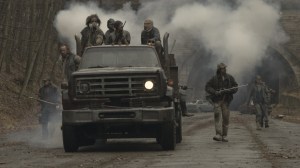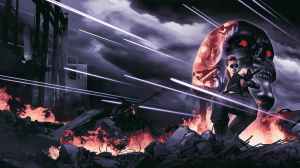In 2000, the first X-Men movie changed the cinematic landscape by showing that Marvel’s superhero movies could open to over $50 million and take in a nine-figure sum over the course of a run at the box office. But 20th Century Fox’s X-Men movies franchise wasn’t the first attempt at bringing the X-Men to the big screen. A different X-Men movie was nearly made in the 1980s.
Videos by ComicBook.com
Polygon has a feature recounting the history of the project. With the success of Richard Donner’s Superman at the box office and sales of Marvel Comics and related merchandise at a high, Stan Lee felt it was time to bring their intellectual properties to the big screen. He sent Alice Donenfeld-Vernoux as Marvel’s ambassador to film studios and, after a long string of rejections, Vernoux managed to get Canadian studio Nelvana, known for animation, interested in the X-Men.
Marvel sent Chris Claremont — the writer who turned the X-Men into Marvel’s top-selling, most popular franchise — out to introduce the Nelvana staff to the world of mutants. Claremont was then assigned the job of developing a treatment for the film. He came up with two different outlines, both with an X-Men roster that included Cyclops, Phoenix, Storm, Wolverine, and Professor Xavier.
Here’s a summary of Claremont’s first outline, as described in the Polygon piece: “The first version, dated June 1982 and called Rite of Passage, specifically focuses on Kitty Pryde. Claremont enters the world of the X-Men through the life of Kitty, following her journey from new recruit to part of the X-family. The villain is the heroine’s father, who, after trying to kill Professor Xavier while being possessed by an evil mutant named Proteus, turns against his daughter and uses his senatorial power to turn the country against the mutants. Meanwhile, Professor X grows weak from the possession, prompting his pupils to rise up and save him from being trapped in the astral realm. At the end of the day, the gang saves Xavier, Senator Pryde’s love for his daughter wins out, and everyone is happy.”
The second outline also included Kitty Pryde but was focused more on Magneto’s rivalry with Xavier. This rivalry played out against the backdrop of the Cold War and had much bigger, more blockbuster-ready stakes: “At one point, Magneto raises an island from beneath the ocean and destroys a Soviet submarine full of nuclear warheads with his hands. Later, he creates a volcano in a distant Russian city and sets it off to send a message. At the end, after almost killing Kitty, Magneto realizes that he’s gone to[sic] far and turns to Charles for forgiveness.”
Fans who have read Claremont’s X-Men comics will recognize both of these outlines as riffs on the kinds of things Claremont wrote into those comics. But neither version of Claremont’s X-Men movie ever made it past the script phase. Claremont left the project to focus on writing novels, the X-Men, and the new spinoff series New Mutants.
That’s when things started to go wrong. Marvel veterans Roy Thomas and Gerry Conway were brought on to write new scripts, though no treatment for the film existed. Nelvana struck a distribution deal with Orion Pictures, who brought on some new producers. These producers were ignorant of Marvel and X-Men mythology. They kept rejecting Thomas and Conway’s scripts and asking for them to be rewritten for a less “niche” market. After a number of rewrites, Thomas and Conway turned in a script that barely sounded like X-Men at all.
The film makes almost no mention of mutants, as the producers felt “mutants” were analogous to “monsters” and would make the movie a tough sell. There was no Xavier School. Instead, Professor X and Cyclops traveled around the world recruiting superheroes. Proteus became a corporate CEO, Wolverine got his adamantium skeleton after a car crash, and Professor X could walk.
Jean Grey was replaced by a new character named Yoshi, a Japanese New Wave pop star who loves “all things cute, all things Godzilla.” She would have been a love interest for Cyclops that the producers hoped would appeal to the international market (they were against using Sunfire, a Japanese mutant who already existed in the Marvel canon).
There was also a completely powerless character named Bernie, who was Kitty Pryde’s friend and served as an alternative love interest to Colossus, who was included in this version of the script. But Bernie was primarily a bumbling plot device that the producers wanted to include because they felt boys would be turned off by having Kitty, a girl, be the point-of-view character (this despite her being created in the comics for this specific purpose).
This X-Men project was scrapped when Orion ran into some financial problems and filed for bankruptcy. The studio lost the rights and they were picked up by 20th Century Fox, who finally got the X-Men film franchise off the ground in 2000. That franchise has run for 20 years, coming to its conclusion with Dark Phoenix.
Polygon has additional details on this strange saga and quotes from Conway and some of the others involved, so check that piece out if you want more information. What do you think of this 1980s X-Men movie that almost was? Let us know in the comments. Dark Phoenix is now playing in theaters.








